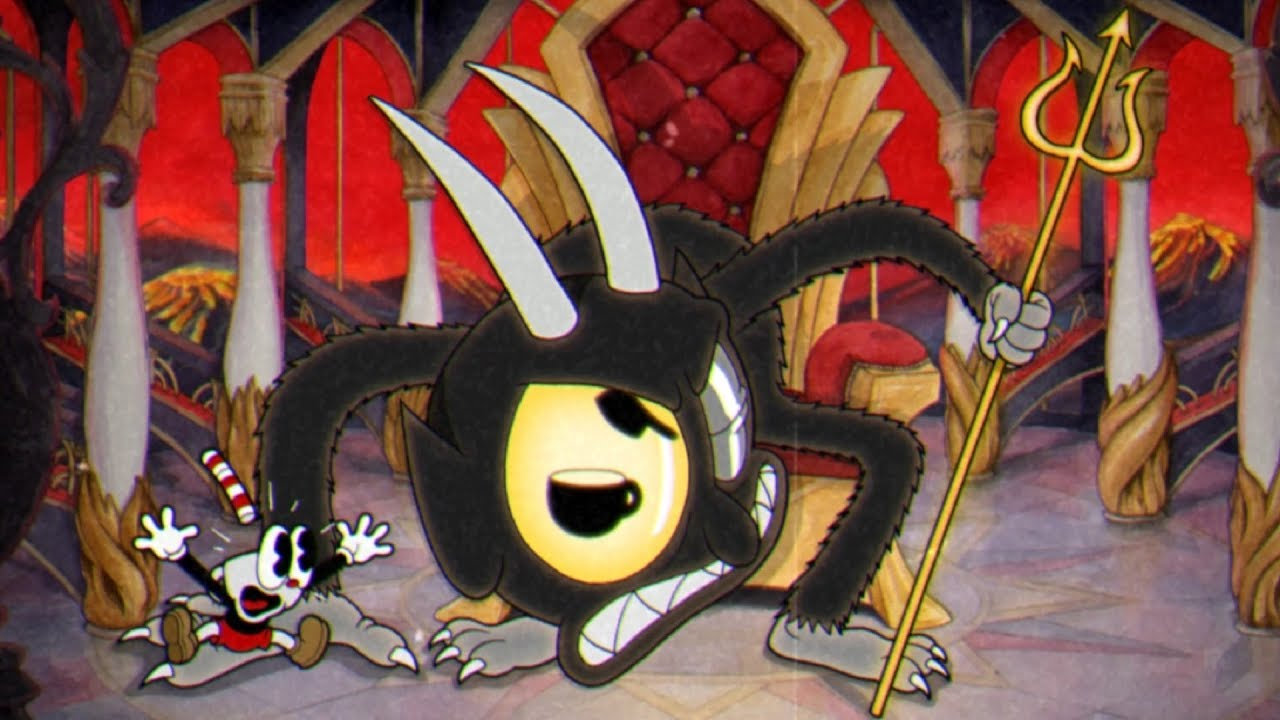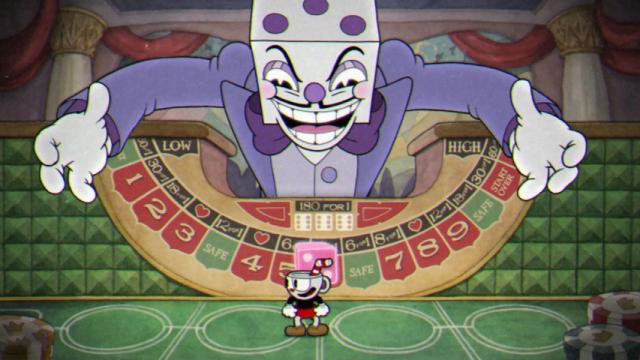Cuphead is a beautiful looking game with tight controls and gruelling combat that culminates in game unlike many others. But as a throwback to the animation of the early 20th century, it finds its muse in a troubling past it never gets around to actually confronting.
There’s a famous saying often attributed to Sigmund Freud that goes “sometimes a cigar is just a cigar.” While he almost certainly didn’t actually say it, the quote lives on because of the appeal of its underlying logic: Not everything has another layer, a hidden meaning, or a secret agenda.
As persuasive as this logic can sometimes be, however, it’s often born of exhaustion or hopelessness rather than insight, like when when J.J. Gites is told at the end of the movie “Forget it Jake, it’s Chinatown.”
A lot of people have wanted to do the same with Studio MDHR’s latest game and say something along the lines of “sometimes a cup is just a cup.” But over at Unwinnable, Yussef Cole convincingly shows why that’s not the case.
In an essay titled “Cuphead and the Racist Spectre of Fleischer Animation,” he argues that the imagery used in the game borrows from tropes and characters intended as a rebuke against the culture and music associated with black people in the 1930s.
By taking the “good” parts of this tradition of animation and leaving the bad, Cuphead ends up whitewashing the past.
He writes,
“By sidestepping this kind of over the top caricature, Cuphead attempts to represent the best of the jazz era’s relationship with cartoons. And there is a lot of good to be found. Calloway is an electric performer and cartoons like the Fleischer’s 1933 films The Old Man of the Mountain and Betty Boop in Snow White do far better justice to his inimitable style. At the same time, these examples feature his voice in the body of an old white man and a white-faced clown, respectively. When it comes time for cartoons to represent him as a human being, his lips balloon up, his eyes grow, and he is forced into the minstrel mould, the only way that animation studios seemed to be able to envision black characters for decades. That Cuphead follows the path of the Fleischers and hides what could have been his likeness behind an anthropomorphic talking dice is historically in line with black representation in animation. Once it became faux-pas to depict black characters as minstrels and racist caricatures, then the solution appears to be not depicting them at all.”

At two different points, Cole quotes the creators behind the game. First is an interview with artist Maja Moldenhauer who said, “It’s just visuals and that’s about it. Anything else happening in that era we’re not versed in it.”
The second time it’s something designer Chad Moldenhauer told Kotaku a couple weeks ago,
“We went into the game knowing that what we wanted from the era was the technical, artistic merit, while leaving all the garbage behind. You can find it in everything from the era: film, advertisement, everything. We wanted to take the style but make it our own. We tried to focus on our likes and dislikes and steer away from any of that.”
“All the garbage” in this case means the deep-seated racism and reactionary politics which surrounded early American animation. Art doesn’t arise out of nothing, from no one and from nowhere. People create it.
The dream of being able look to the past and extricate what we find free from baggage is understandable, but as Cole shows, can have the unintended consequence of compounding the sin. Where characters of colour were originally depicted with racist imagery, they now risk not getting depicted at all.
You can read the rest of Cole’s essay over at Unwinnable.

Comments
24 responses to “It’s Impossible To Separate Cuphead From The Era That Inspired It”
Sometimes a well animated video game is just a well animated video game.
Sometimes being OTT with extrapolating bigotry out of something you enjoy is white guilt.
No it isn’t. I cam do it right now.
“The only thing that Cup head borrows from the era that inspired its the animation style and its musical style”
“Forget it Cuphead… It’s Inkwell Island” – Mugman
I’m so confused by the last line
If characters of colour in Cupheard were depicted “authentically” then everyone would be screaming racism. If they were depicted minus the racist extras of the era then everyone would be screaming whitewashing or equivalent.
Please give an example where this artstyle could be used “respectfully”. (Barring a game that is actually intended to tackle the racism of that era.)
Don’t you understand? The game should never have been made.
The writer could have saved everyone a lot of time, effort and money by publishing his piece years ago when the game (and its art style) was first shown. Maybe it took this long to figure out a way to get offended by it?
Yeah but you have to wait until it’s popular and selling well.
I wish i could give you two upvotes
It’s totally possible to separate it. I’ve been doing it up until now, and I’ll continue doing it. If you constantly look for problems in the world, you’ll find them. Some battles don’t need to be fought.
Was going to say this, I’ve been unintentionally separating it this entire time.
Absolutely incredible. Some people will go out of their way to not enjoy something, huh?
Culture of outrage.
At no point did I sit there and think “Wow, the 1930s were racist” when I saw two cartoon cups and a giant dice man. I doubt most others did too.
I can’t tell if it’s 10/10 trolling or if this guy does actually walk around all day looking for ways to feel left out of society.
It makes me how alone I am when I see so many people refuse to complicate their feelings about a game.
The article makes a pretty simple statement, basing the games art style around a time where cartoons were pretty racist has meant that to avoid glorification, they chose erasure. Considering black characters were prominent in these jazz era cartoons, the erasure is notable.
Nowhere in this article states that you can’t love the game or it’s art style. Believe it or not, some discussions about racism in the past aren’t concerned with making white people feel guilty.
Both arguments are valid.
You can’t seperate an art movement from social context. It’s history.
But at the same time, aesthetics can be just that, for the sake of a stylistic choice.
TBH, all the outrage towards perceived ‘sjw’ behaviour by internet arbiters of common sense is just as nauseating as extreme PC police.
I grew up watching these old cartoons. I even watched one that is now banned and can’t be commercially bought. To me they were just cartoons. Did I grow up racist? Nope. People need to stop being so pc and realise this game is just a game. I’m pretty sure there’s heaps of black people who have played it and haven’t given a damn about any supposedly racist undertones
I’m surprised and saddened by the amount of coments leaping out to say this is a non issue. The thing is, it is important to talk about these kind of things. Both the piece that inspired this article and the article itself are thoughtful and don’t condemn the game. They explore an issue that the game creators obviously didn’t feel they could tackle and discuss that unwinnable proposition. Its the discussion thats important – a point that most internet reactionaries seem to think is attacking or lessening gaming or games.
I’m reminded of a DS9 episode where Sisco doesn’t want to go to Vic’s holosuite because it wasn’t an accurate depiction of the hardship that African Americans faced in the 40’s. The episode explores the idea and eventually Sisco joins in after Cassidy describes it as ‘how it should have been’.
To dismiss this article so easily, is the same trap that the creators are being criticised for falling into. It closes off the discussion, and at the very least, thats what we should keep open. Its the avenue to better ganes in the future.
I’m afraid that you are giving the article more credit than it deserves. Yes, the topic is delicate and more discussion is always good. However, when somebody is literally saying that a game that could have been overtly racist given its inspiration ended being racially problematic anyway by not addressing the issue of racism upfront, you have someone who was looking to be offended and when he wasn’t he felt offended instead by having been denied the pleasure: Like hell he was going to give up all this commentary he had pre-construed when he saw a game influenced by a style developed when people were racist!
What do you think the game would have had to do in order to appease such eagerness to be offended? Start with a two-minute scrolling wall of text acknowledging the evils of that animation style in its time and begging forgiveness for daring to employ such a tainted art? Do you imagine people dismissing architecture based on classic Greek and Roman styles because their support for slavery? Renaissance-influenced art due to the prevalent treatment of women as property back in the era? Rock music for the rampant homophobia of the time when it was created?
I just didn’t get that feeling of manufactured offense that you did. You ask what the solution is? Certainly not 2 minutes of scrolling text explaining away offensive or lack of offensive stereotypes. As the title of the article says, it’s a bit of an unwinnable position.
I recall the episode when Loco Roco was criticised for its evil black locos. Even the colour and its connotations with darkness and evil make things difficult… but you can’t ban a colour or the associations we have with them. The article mentions that whitewashing black contributors was common in the era that inspired Cuphead, but Cuphead erases this, rather than fixes it. Architecture built by slaves isn’t overtly about their struggle. Some rock music IS deeply offensive, but it can also be used for empowering social commentary or self criticism.
As a solution, I present the animation of Rhaposdy in Blue, in Fantasia 2000 where a down on his luck construction worker strives to become a Jazz musician, achieves, and plays some bangin’ trumpet. The animation is representative of a people, not a parody like a golliwog. Could cuphead not have attempted something lile this?
The difference is that Rhapsody in Blue was a story with a message and an animation style chosen to suit it. Cuphead is a /game/ with a silly story. It doesn’t owe anybody a political responsibility just for its choice of animation style. They did well enough by not incorporating all the terrible stereotypes and social attitudes of the cartoons they drew inspiration from.
Like architecture which is not overtly about the struggles of the slaves that built them, Cuphead is not about the role of racial politics under modern sensibilities. It is simply art and entertainment. It /could/ incorporate a message and it could even be argued that it was a missed opportunity not doing so. However, its lack of message is no reason to point disappointed fingers and criticise.